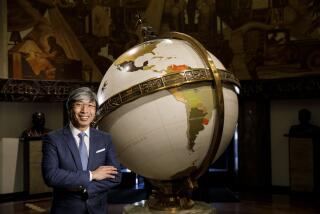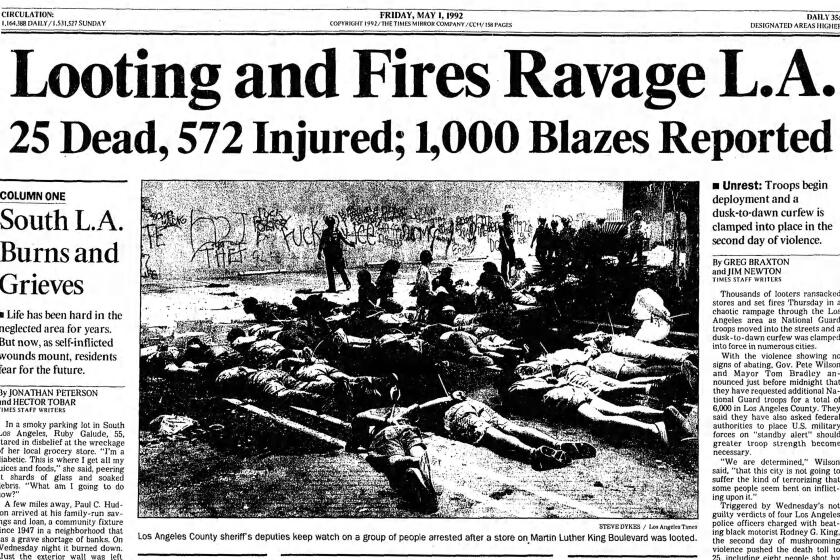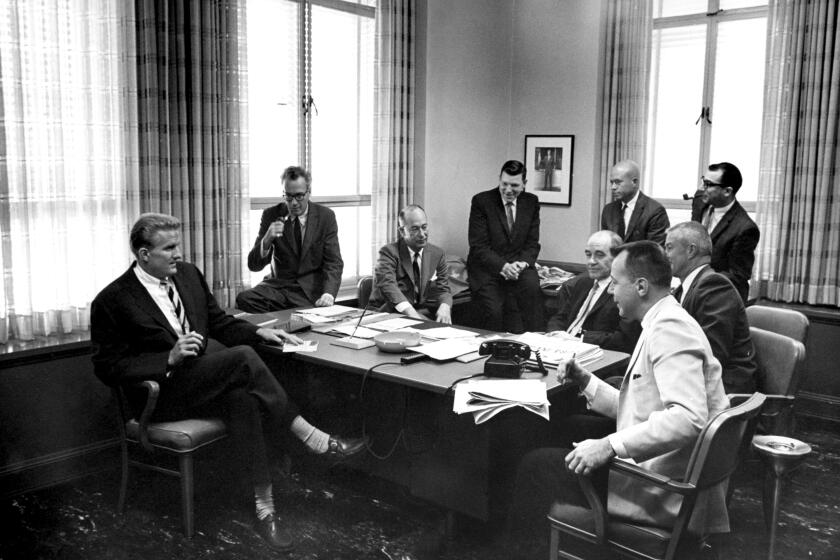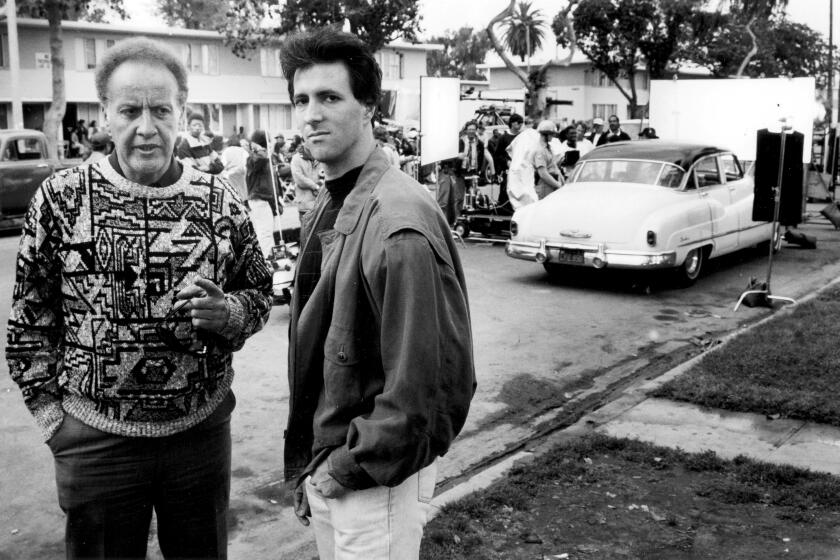The Times’ reckoning on race and our commitment to meaningful change
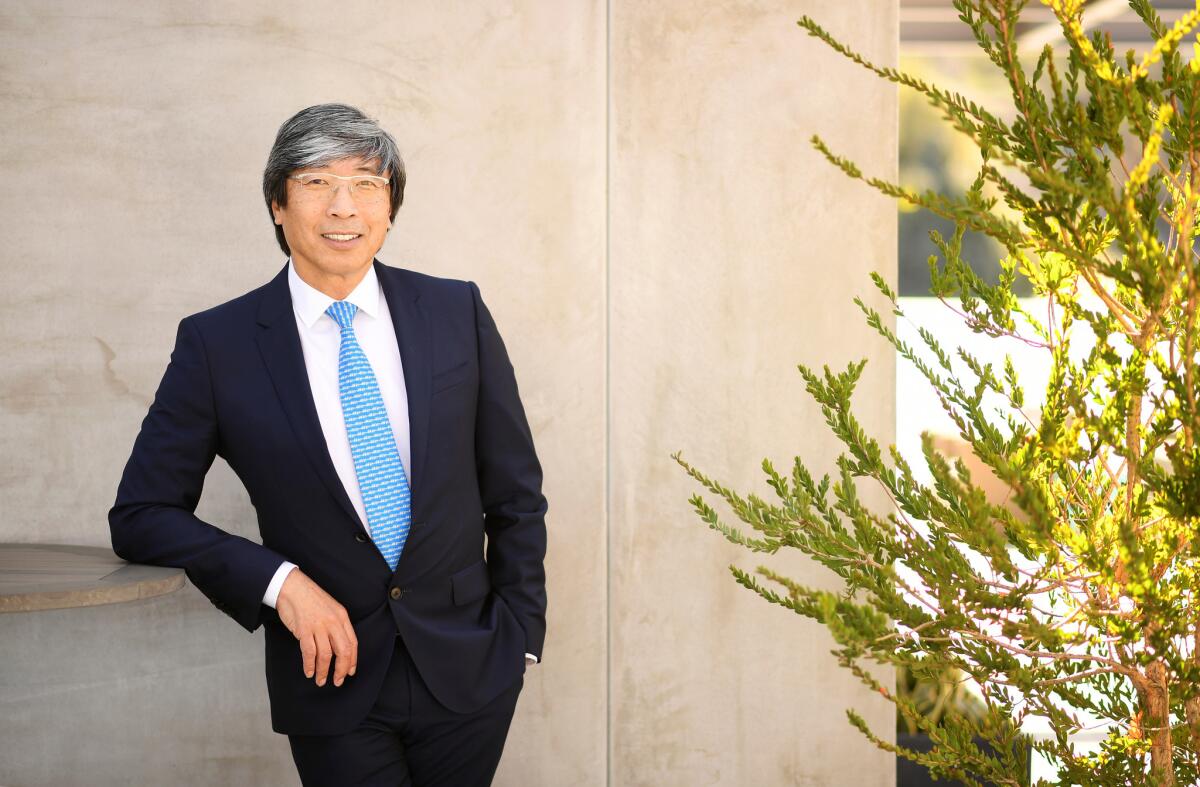
This year, with the pandemic and the resulting economic crisis, the systemic racism in our country has been laid bare. One need only look at who was vulnerable to and suffering from COVID-19 to understand how racial inequality disadvantages those who are discriminated against.
And then in May, as our physical environments remained limited and we were increasingly reliant on news media to stay connected to the world, we collectively witnessed — through a bystander’s cellphone video — the horrific killing of a Black man, George Floyd, in the custody of a white police officer. It was not an isolated event, but it was galvanizing, and it spoke to centuries of racism in America that started with the enslavement of Black people.
Since then, across America, we’ve engaged in conversations about race and discrimination that have been candid, direct and consequential. They are happening among friends and co-workers, through protests and political debates, at athletic events and in pop culture. And they are happening at the Los Angeles Times.
This news organization can succeed only to the degree it engages, examines and accurately reflects the city and the region. Much of its best work has succeeded because it has done that.
Our reckoning with racism
As the country grapples with the role of systemic racism, The Times has committed to examining its past. This project looks at our treatment of people of color — outside and inside the newsroom — throughout our nearly 139-year history.
But over its history, The Times has also mirrored, and in some cases propagated, the biases and prejudices of the world it covers, reflecting and shaping attitudes that have contributed to social and economic inequity. Today, we are beginning the process of acknowledging those biases of the past and taking positive action to affirm a commitment that our newsroom will not tolerate prejudice.
Since it began publication in the early 1880s, The Times has had blind spots. It has ignored large swaths of the city and its diverse population, or covered them in one-dimensional, sometimes racist ways. In part that is because the paper’s staff has never truly reflected the region. The paper employed no Black staff journalists until the mid-1960s. Latinos have never been represented on the staff in anything like their numbers in the community. The Metro staff didn’t have its first Asian American staff member until the late 1970s.
As the Los Angeles Times’ first nonwhite owners in its nearly 139-year history, my wife, Michele, and I are determined to increase diversity within the organization. We believe that The Times can better represent Los Angeles and California by providing more and better coverage of Black, Latino, Asian and other underrepresented communities in our English- and Spanish-language publications. We have committed to hiring more reporters and editors of color and to building an organizational culture that truly values representation and equity. We will strive to retain, mentor and promote journalists of color. And we will be transparent in this process.
These are issues deeply important to my family and me.
I met Michele when we were both teenagers in the Eastern Cape of South Africa, where my father had fled from China during World War II. I was a member of an anti-apartheid student union. Later, as a young, nonwhite doctor in a society predicated on racial prejudice, I received a salary that was 50% that of my peers at a hospital where my first white patient refused to let me touch him.
Michele vividly remembers being told there was no place for her in the entertainment industry, just as I remember being arrested by the police in South Africa for refusing to carry an identity card. We know well the pain of both explicit and unconscious racism, something you cannot fully understand unless you have experienced it yourself. For a person of color, the structural and interpersonal violence that is the legacy of colonialism, slavery and policies designed to disenfranchise human beings based on their race or ethnicity is unmistakable. It is part of everyday life.
Michele and I came to the United States in 1980 for the opportunities it promised and have made Los Angeles our home. We were attracted to Southern California, in part, because of its rich diversity, and we feel deeply rooted in this wonderful city where we have raised our children and made our lives. We have been immensely fortunate, and purchasing the Los Angeles Times in 2018 came from a desire to give back to a city that has given us so much.
Our guiding hope has been to rebuild The Times following years of disinvestment, strengthen the newsroom that plays a critical role in our democracy, and help make the paper a beacon of truth and inspiration. We also feel a deep personal responsibility and duty to fight racism and bias. The national reckoning on race and that within the Los Angeles Times are welcome developments that have already led to productive conversations, concrete plans and accelerated progress for us.
We are committed to change, both because it is just and because it is mission-critical for our business. Only a diverse newsroom can accurately tell this city’s stories. Only a newspaper that holds power to account and uncovers injustice can truly succeed.
The Times has committed to a close examination of its past, beginning with the project we are launching today. It starts with an overview by the editorial board of The Times’ history in covering and employing people of color and an acknowledgment of the paper’s failings. Over the following days, we will run stories by staff reporters and columnists examining in greater depth, and from a personal perspective, aspects of the paper’s coverage of nonwhite communities and treatment of journalists of color.
We eagerly embrace this self-examination because we believe we can move forward only by first understanding what came before. In South Africa, it was truth and reconciliation that led to meaningful change. By confronting the injustices of the past, we can meet this historic moment and make The Times an institution and publication that can serve you, our readers, and the community better.
We invite you along on our journey.
More to Read
A cure for the common opinion
Get thought-provoking perspectives with our weekly newsletter.
You may occasionally receive promotional content from the Los Angeles Times.

